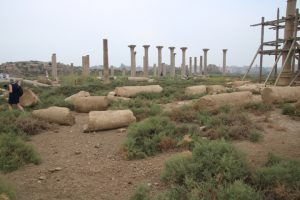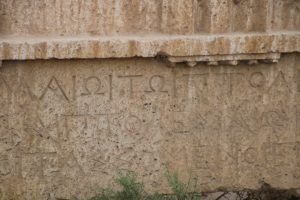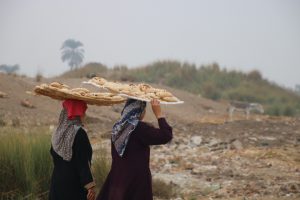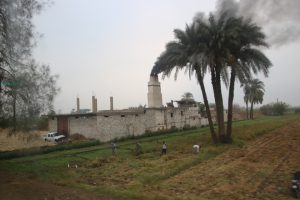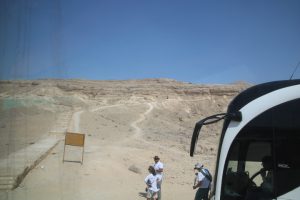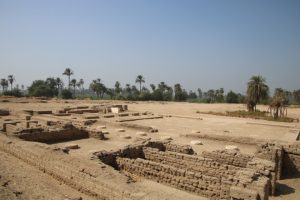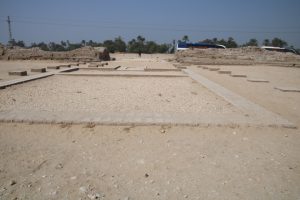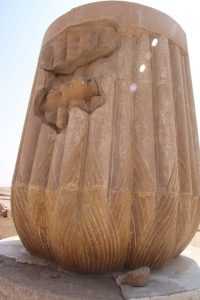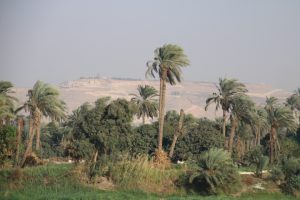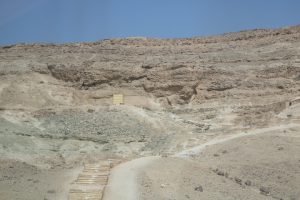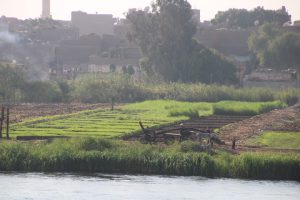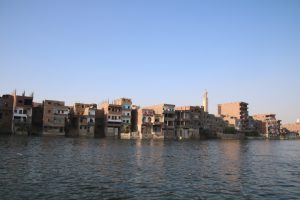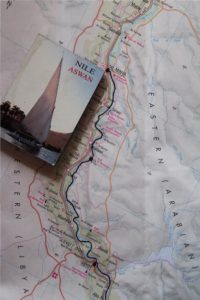With an early start, Hermopolis was our first site on the exploration of more of Middle Egypt’s antiquities. This was the site of a capital of the 15th Period (around 1600 BC) and according to legend translates as “8 town” with references to four pairs of snakes and frog gods in a creation myth. This area was also an important cult centre of Thoth, the god of wisdom and writing whom the Greeks identified with their good Hermes, hence the Greek name, Hermopolis.
Tuna Al Gebel was the necropolis of the site. Its dark underground tomb once held many thousands of mummified ibis and baboons both seen as a living image of Thoth. Tuna Al Gebel belonged to Akhenaten and his giant city of Akhetaten. Here the tomb of Petosirishas amazing coloured reliefs illustrating farming and daily life at the time. In the fifth year of his reign Akhenaten (1352-1336 BC) and his queen Nefertiti abandoned the gods and priests of Karnak and established a new religion based on the worship of one god, Aten, god of the sun disc. His capital, now known as Tel Al Amarna, is built upon the flood plain of a meander of the river with the high cliffs of the East Bank as a backdrop. It fell into ruins within 30 years but careful exploration reveals what the great city was like.
Within the tombs dug into the high escarpment and reached by footpaths and more than 200 steps there is a variety of unfinished construction and wall reliefs. One is complete and the relief shows Nefertiti driving her chariot protected by soldiers and supported by footmen.
Mid-afternoon saw us cast off and continue to Minya. This is the provincial capital of the region and was once the centre of cotton production and trade. The town now produces sugar, soap, perfume and electronics. We will spend the night here.
